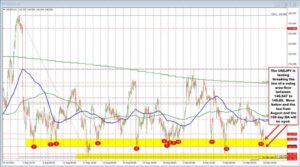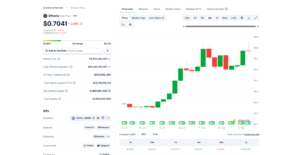Kiwi Plunges After RBNZ Cut. Forecast as of 20.08.2025

The Reserve Bank of New Zealand will continue to cut rates, while global risk appetite is declining. Against this backdrop, the NZDUSD pair has dropped significantly. What will help the pair to recover? Let’s discuss this topic and make a trading plan.
The article covers the following subjects:
Major Takeaways
- The RBNZ cut its key rate to 3% for the eighth time.
- The fall in the S&P 500 index worsened global risk appetite.
- Divergences are hurting the kiwi.
- Short trades on the NZDUSD pair can be considered with targets of 0.573 and 0.566.
Weekly New Zealand Dollar Fundamental Forecast
A double blow from the US stock market and the Fed sent the NZDUSD exchange rate tumbling to its lowest level since early April. The New Zealand dollar lost nearly all its gains after Donald Trump announced tariffs on Liberation Day. Investors have long believed that the most aggressive protectionist policy since the 1930s would lead the United States into either a recession or stagflation. Meanwhile, the situation in New Zealand is no better.
In a thin summer market, when trading volume in New York falls to its lowest level since early May, it only takes one company to bring down the S&P 500 index – NVIDIA. The tech giant’s 3.5% plunge triggered a broad stock market sell-off, dampened global risk appetite, and sent the NZDUSD into a tailspin. This was exacerbated by the Reserve Bank’s decision not to support the kiwi.
New Zealand’s Cash Rate and Inflation
Source: Bloomberg.
The RBNZ began its cycle of monetary expansion a year ago and has already cut the cash rate by 250 basis points. 22 out of 23 Bloomberg experts correctly predicted that the key rate would fall by 25 basis points to 3% at the August meeting. However, the surprise was the divided opinion among central bank officials, with two of the six believing borrowing costs should be reduced by 50 basis points at once.
At a press conference following the meeting, Acting Reserve Bank Governor Christian Hawkesby announced that the cash rate would fall to 2.5% by the end of the year. Whether this will happen sooner or later depends on the data.
Unlike the Fed, which is resuming its cycle of monetary expansion without hesitation, the RBNZ continues to act aggressively against the backdrop of New Zealand’s economy emerging from recession and slowing inflation. Meanwhile, the lowest population growth rates in three years are hurting the labor market and GDP growth.
New Zealand Population
Source: Bloomberg.
Divergences in economic growth and monetary policy may make the New Zealand dollar the underdog among G10 currencies. This is particularly likely given China’s extremely vulnerable position. Capital outflows from China reached a record $58.3 billion in July, restricting the PBoC’s ability to provide monetary stimulus.
However, some believe the yuan will strengthen against the US dollar due to erosion of confidence in the Fed, a slowdown in the US economy, and a cut in the federal funds rate. A fall in the USDCNH pair would benefit the New Zealand dollar.
Weekly NZDUSD Trading Plan
Against this backdrop, short-term sales on the NZDUSD with the targets at 0.573 and 0.566 are relevant. A rebound from these levels will allow traders to lock in profits and open long trades.
This forecast is based on the analysis of fundamental factors, including official statements from financial institutions and regulators, various geopolitical and economic developments, and statistical data. Historical market data are also considered.
Price chart of NZDUSD in real time mode
The content of this article reflects the author’s opinion and does not necessarily reflect the official position of LiteFinance broker. The material published on this page is provided for informational purposes only and should not be considered as the provision of investment advice for the purposes of Directive 2014/65/EU.
According to copyright law, this article is considered intellectual property, which includes a prohibition on copying and distributing it without consent.






